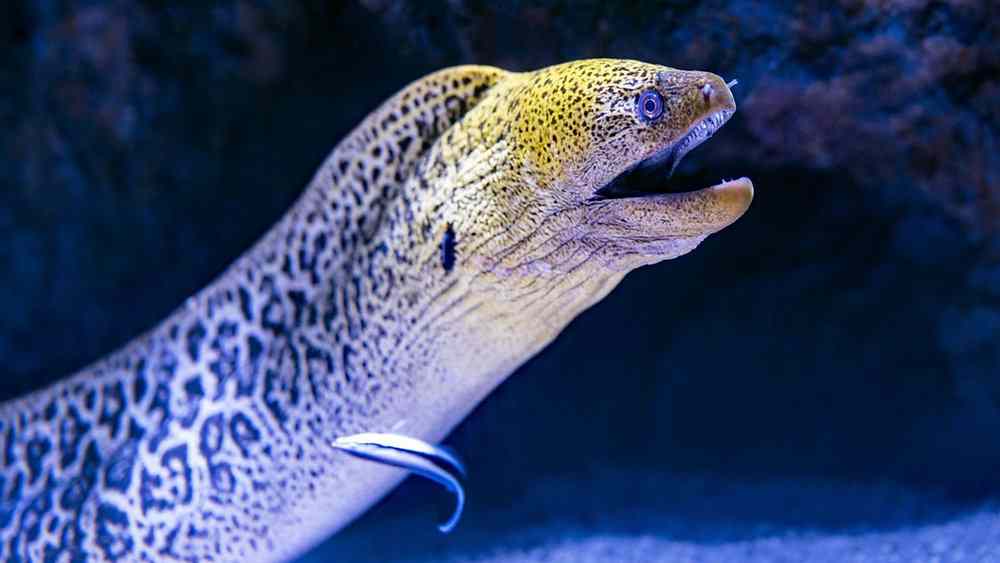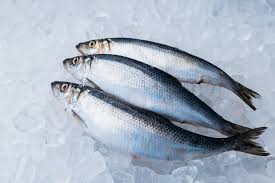Migration in fishes is a fascinating and ecologically significant phenomenon involving the periodic movement of fish species from one habitat to another for feeding, breeding, or other biological purposes. These migrations are crucial for the survival and perpetuation of fish species, playing an essential role in their life cycles and the ecological balance of aquatic ecosystems. Some fish species travel short distances within rivers or lakes, while others undertake extraordinary long-distance migrations across oceans and continents. This article provides a comprehensive, structured exploration of the types, causes, and mechanisms of fish migration.
Fish migration is defined as the regular, often seasonal movement of fish from one habitat to another, typically in response to environmental cues such as temperature, salinity, or reproductive needs. These movements are usually predictable, cyclical, and purpose-driven, often ensuring the completion of vital biological activities like spawning, feeding, or escaping adverse conditions. Migration can occur within freshwater systems, between freshwater and marine environments, or entirely within oceanic realms.
Summary of Fish Migration
- Fish migration is the periodic, purposeful movement of fish between different habitats for breeding, feeding, and survival, often triggered by environmental factors like temperature and salinity.
- Types of migration include anadromous (sea to freshwater), catadromous (freshwater to sea), amphidromous, potamodromous (within freshwater), and oceanodromous (within oceans).
- Migration is essential for population maintenance, ecological balance, biodiversity conservation, and supports valuable commercial fisheries worldwide.
Table of Contents
Types of Fish Migration
Anadromous Migration
Anadromous migration refers to the movement of fishes from the sea into freshwater for the purpose of breeding. Fish species that display this pattern spend most of their adult life in the ocean but migrate to rivers or freshwater streams during the spawning season. Salmon is a classic example of an anadromous fish, which travels thousands of kilometers upstream to lay eggs in the place where it was originally born.
Catadromous Migration
In contrast to anadromous fishes, catadromous fishes migrate from freshwater habitats to the sea for breeding. The European eel (Anguilla anguilla) exemplifies this migratory behavior. Eels grow and mature in freshwater rivers and lakes but travel to marine environments like the Sargasso Sea to spawn. After hatching, the young eels, known as leptocephali, return to freshwater habitats to continue their growth.
Amphidromous Migration
Amphidromous fishes migrate between freshwater and marine environments, but not specifically for breeding. Instead, these migrations occur at different stages of the life cycle, often for feeding, growth, or avoiding predators. Both the adult and juvenile stages might undertake these movements independently of reproductive activities.
Potamodromous Migration
Potamodromous migration involves fish species migrating entirely within freshwater ecosystems such as rivers, lakes, and reservoirs. These migrations generally occur for feeding, spawning, or seasonal habitat changes. Carps and trouts in river systems often exhibit this type of migration.
Oceanodromous Migration
Oceanodromous migration pertains to the movement of fishes entirely within marine environments. These migrations may be longitudinal, latitudinal, or vertical within the ocean, typically for breeding, feeding, or temperature preferences. Herring and mackerel are prominent examples of oceanodromous fishes.
Causes of Fish Migration
Reproductive Purposes
One of the primary causes of fish migration is the need for reproduction. Many fish species undertake long journeys to specific spawning grounds that offer suitable conditions for laying and fertilizing eggs. Factors such as water temperature, substrate type, and oxygen content often influence these reproductive migrations.
Feeding Requirements
Food availability is another significant reason for fish migration. Seasonal variations in the distribution of plankton, small fishes, or other prey can prompt fishes to move to regions where food resources are abundant. Some species migrate daily or seasonally between different feeding areas.
Climatic and Seasonal Changes
Temperature and other climatic factors play a vital role in determining the migratory behavior of fishes. Fish species are sensitive to changes in water temperature and photoperiod, which often trigger seasonal migrations. During unfavorable conditions like winter or drought, fishes may migrate to deeper, warmer, or more stable aquatic environments.
Avoidance of Predators
Predator avoidance also influences fish migration. Juvenile fishes, in particular, may move to areas with abundant vegetation or shallow waters where they are less likely to be detected and consumed by predators. Some migrations are thus driven by the necessity to find safer habitats.
Osmotic Regulation
For fishes that move between freshwater and marine environments, migration helps maintain osmotic balance within their bodies. Fishes that experience difficulties in maintaining homeostasis in particular salinity conditions migrate to more suitable environments for physiological stability.
Mechanism of Fish Migration
Sensory Perception and Navigation
Fish use a combination of sensory systems to navigate during migration. Olfactory cues play a crucial role in species like salmon, which recognize the unique chemical composition of their natal stream. Visual landmarks, celestial cues, and magnetic fields are also believed to assist fishes in long-distance navigation.
Environmental Cues
Changes in water temperature, salinity, photoperiod, and current flow serve as environmental signals that trigger migratory behavior. These factors influence the endocrine system of the fish, initiating physiological changes that prepare them for migration.
Hormonal Control
Endocrine mechanisms regulate the complex processes involved in fish migration. Hormones such as cortisol, prolactin, and gonadotropins coordinate osmoregulatory adaptations, reproductive readiness, and metabolic adjustments necessary for migration.
Energy Storage and Metabolism
Migratory fishes store energy in the form of fat reserves to sustain themselves during prolonged migrations, especially when food resources are scarce during transit. Enhanced metabolic activity ensures efficient utilization of these energy reserves.
Examples of Migratory Fishes
Salmon

Salmon is one of the most well-known anadromous migratory fishes. Born in freshwater rivers, young salmon migrate to the ocean to grow and mature. Upon reaching adulthood, they return to their natal streams to spawn, often overcoming significant obstacles such as waterfalls and dams.
Eel

The European eel demonstrates catadromous migration. Eels mature in freshwater rivers and lakes of Europe and then undertake a long journey to the Sargasso Sea in the Atlantic Ocean for spawning. After hatching, the larvae drift with ocean currents before transforming into glass eels and migrating back to freshwater.
Hilsa
Hilsa, a highly prized fish in South Asia, exhibits anadromous migration. It spends most of its life in the ocean but migrates to freshwater rivers such as the Ganges and Brahmaputra for spawning during the monsoon season.
Herring

Herring represents oceanodromous migration, moving in large schools within the ocean for feeding and breeding. These migrations are usually influenced by water temperature, food availability, and breeding season.
Significance of Fish Migration
Maintenance of Population Dynamics
Migration ensures the survival and perpetuation of fish populations by allowing access to optimal breeding, feeding, and nursery habitats. This maintains the genetic diversity and population structure of fish species.
Ecological Balance
Migratory fishes contribute to nutrient cycling and energy transfer within and between aquatic ecosystems. Their movements distribute organic matter and support various trophic levels, including predators and scavengers.
Economic Importance
Many migratory fishes, such as salmon, eel, and hilsa, hold significant commercial value. Fisheries targeting migratory species contribute to local economies and provide livelihoods for millions of people worldwide.
Biodiversity Conservation
Protecting migratory routes and habitats is essential for conserving fish biodiversity. Many migratory species are threatened by habitat destruction, dam construction, pollution, and overfishing, emphasizing the need for conservation measures.
Challenges and Threats to Migratory Fish
Despite their remarkable migratory abilities, fish face numerous natural and anthropogenic challenges that disrupt their migration patterns and threaten their survival.
Habitat Fragmentation
The construction of dams, weirs, and other barriers in rivers and streams significantly hinders fish migration. These structures block access to traditional spawning and feeding grounds, leading to population declines in migratory species like salmon and sturgeon. Altered flow regimes and water diversion for agriculture or hydropower generation exacerbate habitat fragmentation.
Overfishing
Commercial and recreational overfishing poses a severe threat to migratory fish populations. Excessive harvesting during migration periods or in breeding grounds can drastically reduce reproductive success and population size. Targeted fishing of schooling migratory species such as sardines and tuna disrupts ecological balance and food chains.
Pollution
Industrial discharge, agricultural runoff, and urban waste degrade aquatic habitats, affecting water quality and altering chemical cues essential for navigation. Pollutants can impair sensory systems, disrupt physiological functions, and increase mortality rates among migratory fish.
Climate Change
Global climate change alters water temperatures, salinity patterns, and ocean currents, disrupting traditional migratory routes and timing. Many species struggle to adapt to rapidly changing environments, leading to shifts in distribution ranges, mismatches between breeding and feeding periods, and increased susceptibility to disease.
Invasive Species
The introduction of non-native species can threaten migratory fish by increasing competition for resources, predation, and the spread of diseases. Invasive species may also alter habitat structure and ecosystem dynamics, making it difficult for native migratory fish to survive.
Conservation Efforts for migratory fish
Recognizing the ecological and economic importance of migratory fish, various conservation measures have been implemented to protect these species and their habitats.
Habitat Restoration
Efforts to restore degraded aquatic habitats focus on removing or modifying barriers to fish migration. Fish ladders, bypass channels, and dam removal projects enable fish to access traditional spawning and feeding grounds. Restoration of riparian zones and wetlands improves water quality and provides essential refuge areas.
Fishing Regulations
Implementing strict fishing regulations, such as seasonal closures, catch limits, and protected areas, helps prevent overexploitation of migratory fish populations. Designating no-take zones and spawning sanctuaries safeguards critical habitats during sensitive life stages.
Pollution Control
Enforcing environmental regulations to reduce industrial, agricultural, and urban pollution improves water quality and aquatic ecosystem health. Efforts include monitoring effluent discharge, promoting sustainable agricultural practices, and enhancing wastewater treatment infrastructure.
Climate Change Mitigation
Addressing climate change through global initiatives to reduce greenhouse gas emissions benefits migratory fish by stabilizing aquatic environments. Conservation plans increasingly incorporate climate resilience strategies, such as preserving thermal refuges and promoting species adaptation.
Public Awareness and Community Involvement
Engaging local communities, fishers, and stakeholders in conservation programs raises awareness about the importance of migratory fish and sustainable resource management. Educational campaigns, citizen science projects, and participatory monitoring empower communities to contribute to conservation efforts.
Conclusion
Migration in fishes is a complex and vital ecological process involving regular, purposeful movements across different habitats. Driven by reproductive, feeding, climatic, and survival needs, fish migrations play a crucial role in maintaining population dynamics, ecological balance, and biodiversity. Understanding the types, causes, mechanisms, and significance of fish migration is essential for sustainable fisheries management and conservation efforts. As human activities increasingly threaten migratory routes and habitats, protecting these natural phenomena has become an urgent priority for ecological health and food security.
Comprehensive conservation efforts, including habitat restoration, fishing regulations, pollution control, climate change mitigation, and community involvement, are vital to ensuring the long-term survival of migratory fish species. Preserving these natural migrations not only supports biodiversity and ecosystem health but also sustains fisheries and cultural traditions worldwide.
Frequently Asked Questions (FAQ)
How do dams affect fish migration?
Dams obstruct fish migratory routes, preventing them from reaching essential breeding and feeding areas, which disrupts their life cycle and population balance.
What is anadromous and catadromous?
Anadromous fishes migrate from the sea into freshwater rivers to spawn, while catadromous fishes migrate from freshwater habitats to the sea for breeding.
What are the factors influencing fish migration?
Fish migration is influenced by factors such as water temperature, salinity, photoperiod, availability of food, reproductive needs, and the need to avoid predators.
Related Contents
Tryptophan Operon: Regulation, Function and Significance
DNA Replication – The Molecular Mechanism of Genetic Inheritance




